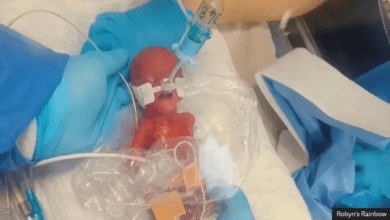Seven more women join pro-abortion lawsuit against Texas

Seven more women joined the case filed by the Center for Reproductive Rights against Texas, bringing the total number of plaintiffs in the case to 22.
The plaintiffs sued in Texas of the state laws for life, falsely claiming that laws do not allow doctors to care for expectant mothers who suffer medical complications during their pregnancy. The case, Zurawski v. The State of Texaswas first filed by the Center for Reproductive Rights on behalf of five women in March.
The Center for Reproductive Rights recognized that Texas’ pro-life law provides exceptions for abortion in cases of medical emergency, however, it simultaneously states that Texas has a “strong prohibition on abortion” and seeks to “clarify the scope of state ‘medical emergency’ exception.” Forced abortion — the intentional and direct killing of preborn children in the womb — is not medically necessary. A pregnancy can be terminated without accidentally killing the baby.
The seven new plaintiffs join the main plaintiff, Amanda Zurawski, two OB/GYNs, and 12 other plaintiffs. Each woman shared heartbreaking stories in an attempt to prove that Texas needs to weaken its protections for preborn people. However, none of the women needed for her child to be deliberately killed, and the failure of the hospital staff to properly care for them had more to do with medical negligence than pro-life laws.
New plaintiff Cristina Nuñez was suffering from multiple health problems, including diabetes and end-stage renal disease when she conceived her child. According to Center for Reproductive Rights, Nuñez’s pregnancy caused the mother to have more blood clots and spend more time on dialysis. It is not known if Nuñez’s doctors linked these health problems to her pregnancy.
Nuñez sought an abortion, first from Texas; then, when she found out she didn’t qualify for an abortion in Texas, from New Mexico. She wanted to take an abortion pill but said she couldn’t because of her health problems. After the severity of Nuñez’s blood clots increased, she sought and underwent an abortion in Texas after a trip to the emergency room with the help of a pro-bono attorney.
When a woman’s life is truly in danger, doctors can intervene in every state including Texas by end of pregnancy — not by induced abortion, but by delivering life to the child and attempting to save both lives. Sometimes the child is too young to live and will die as a result of an emergency delivery or C-section. The key difference is that the child was killed unintentionally and directly — that is the action prohibited by Texas law.
Another new plaintiff, Kristen Anaya, was 16 and a half weeks pregnant when her water broke, but her daughter, Tylee, remained in the womb. According to reports, Anaya’s OB/GYN told her she would have to get “very sick” before doctors could help her.
“So it could have been avoided – I would have gone into sepsis – if they had been able to induce labor. The sooner they could have delivered Tylee, the better chance I would have had of not going into sepsis. However, Tylee still had a heartbeat,” Anaya said.
She continued, “My wife and I were being told ‘not only did we lose Tylee, but now you’re going to have sepsis and there’s nothing we can do but watch you because of Texas abortion laws.’ ”
ABC News reported that according to her medical records, Anaya’s physician “initiated contact with the termination committee” — a committee of physicians that must approve any abortion at the hospital. However, induction of labor in a medical emergency is not an induced abortion because the child is delivered alive to save the mother’s life. Accidentally kills Tylee before delivery. At 16 weeks, Tylee won’t survive, but that doesn’t make forced labor a forced abortion.
An induced abortion carrying the intention of giving birth to a dead baby. An forced preterm delivery carries the goal of saving the mother’s life, and after 20 weeks, possibly saving the baby’s life as well.
These women did no receive proper care — but proper care cannot be forced abortion.
READ: ‘She is our miracle’: Girl with anencephaly welcomed with love
Other plaintiffs who joined the lawsuit discovered during their pregnancies that their babies had serious health conditions that threatened their ability to survive outside the womb. D. Aylen’s baby had anencephaly, Kimberly Manzano’s baby had organs growing outside her body, Amy Coronado’s baby had holoprosencephaly, and Danielle Mathisen’s baby had spinal conditions and brain. Some children with these conditions survive after birth.
These women cannot have abortions in Texas because there is no threat to their own lives. Abortion is not necessary in case of fetal diagnosis but parents often seek after doctors tell them that their child will not live or will not live a ‘normal’ life. Doctors often misdiagnose and sometimes misdiagnose babies. Regardless, no child deserves to be killed because a doctor says they may die or may suffer.
The Texas Supreme Court will hear arguments for Zurawski v. State of Texas on November 28. The hearing will be live-streamed on YouTube channel of the Supreme Court.






